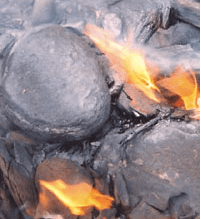Shale, what is it good for? How about fuelling Britain’s energy needs for decades to come? The Sunday Times reported yesterday (£) that the reservoir of shale gas
discovered in the North West could — depending on how it extracts — supply us with energy for up to 70 years. And we devoted our leader in this week’s magazine to the wider potential of this resource. Here is that leader, for CoffeeHousers:
Economies of shale, The Spectator, 11 February 2012
The weather conditions of the past week could not have been better conceived to show up the inadequacies of Britain’s — and the rest of Europe’s — energy policy. A vast anticyclone extending from Siberia to eastern England has brought snow as far south as Rome and temperatures of minus 40˚C to Eastern Europe. With North Sea gas production in sharp decline, never has Europe’s position on the end of a long gas pipeline originating in Russia been so exposed.
As that country’s demand for energy has spiked, so the quantity of gas which it is prepared to export to the rest of Europe — also gagging for extra energy — has slumped. The wholesale price of gas has soared by more than a third in a week. Were electricity companies not still able to substitute some gas-generating capacity with coal-fired power — from plants due to be closed in 2016 to meet carbon-reduction targets — we could well find ourselves struggling to keep the lights on. Try as we might, we are not going to achieve national energy security with any presently known renewable technologies, as they are too expensive and unreliable. It is conceivable that we could achieve it, however, by means of a vast but hitherto unexploited resource:
shale gas.
The vast reserves of gas concealed in shale have long been known about, but until recently there was no economic means to extract them. Over the past five years, however, the situation has changed dramatically, thanks to a method of hydraulically fracturing rock along its seams — or ‘fracking’ for short. While Britain and Europe have been throwing hundreds of billions in subsidies at renewable energy, the US shale gas industry has expanded to account for one quarter of all the country’s gas production — all without subsidies. In doing so it has caught many environmentalists completely unawares. The energy-scarce world of their dreams has been put off for a couple of centuries at least; instead we are staring at a future of potential energy
abundance.
Moreover, exploitation of shale gas is not at odds with carbon reduction policies: kilowatt for kilowatt, energy generated from shale gas emits only half as much carbon as coal — the energy source which it is already beginning to replace in many American states. It is estimated that $4 spent on shale delivers the same energy as $25 spent on oil Even Barack Obama has belatedly started to extol the virtues of shale: little wonder, given that a shale-driven glut of natural gas has halved US electricity prices. Over the last three years, more than 4,000 wells have been
drilled in the Marcellus shale formation in Pennsylvania.
Early indications are that Europe may be no less fortunate in its reserves than the US. Current estimates are that the continent has 630 trillion cubic feet of shale; not far behind the US’s potential of 862 trillion cubic feet. Britain’s recoverable reserves are estimated at 20 trillion cubic feet, which will produce perhaps enough energy for the next 100 years. This is, to put it mildly, a claim that cannot be made about Britain’s wind farms. And this is what infuriates the environmental lobby: the discovery of shale threatens to make redundant their carefully planned, heavily subsidised plans for renewable energy. There may be no energy crisis after all.
Fracking is not a pretty process: it involves drilling a large well and then pumping large quantities of water and sand down it in order to fracture the appropriate strata of rock. Once the rock is fractured, gas can seep into the well and be forced to the surface. But it isn’t anything like as hazardous as environmentalists — in a repeat of the fantasy and exaggeration which characterised the campaign against GM foods a decade ago — like to claim.
Another fear is that fracking causes earth tremors. True, a couple of very minor tremors — of the sort that occur in Britain hundreds of times a year — do appear to have been caused by test-drilling near Blackpool, the epicentre of an embryonic British fracking industry which is now temporarily stalled as a result. But then coal-mining also causes minor earth tremors. It is a problem to be managed, not to be used as a reason to close down an entire industry. Mike Stephenson, head of energy science at the British Geological Survey, said that ‘most geologists think
this is a pretty safe activity’ because ‘the risk is pretty low and we have the scientific tools to tell if there is a problem’.
In the 1990s, Britain allowed environmentalist propaganda to obliterate Britain’s foothold in the GM food industry. Far from keeping Britain GM-free, as the environmental lobby fantasised, we ended up eating GM soya imported from the US — and nobody has suffered as a result. All that the campaign achieved was to ensure that Britain will not profit from the technology.
The same must not be allowed to happen with shale gas. At present, more people die from the cold in Britain — because they are unable to afford to heat their houses — than are killed on the roads. This is an appalling state of affairs for a supposedly rich country. Britain could be on the cusp of a new era of clean, cheap shale energy — but only if we seize the opportunity, as the Americans have.






Comments